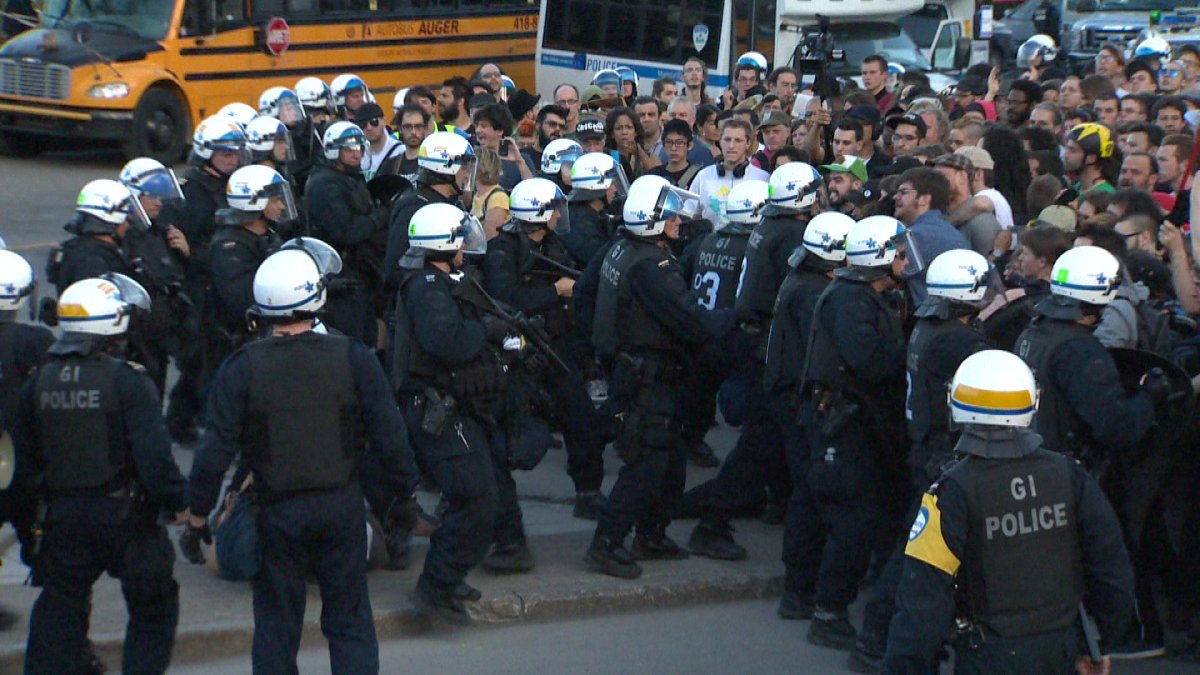Global News looks at kettling, a police tactic used recently to break up demonstrations in Toronto and Montreal.

What is kettling?
Kettling , a tactic widely used by police in Europe, is a way police contain and control large crowds during demonstrations or protests. Police form large human barricades to prevent protesters from moving.
How does it work?
Police surround demonstrators and limit or cut off their exits by surrounding the crowd, sometimes even charging at them. The tactic looks similar to corralling livestock, as police prevent demonstrators from breaking into smaller groups and squeeze the group tighter till they are totally contained.
Why is kettling so controversial?
Though proven to be effective in controlling crowds, the manoeuvre is widely considered controversial as innocent bystanders are liable to end up in the crowd. Toronto Police have been under fire for the use of kettling during the G20 summit in June 2010 in which innocent bystanders were corralled into a group and held for hours.
A recent report by Ontario’s police watchdog accused Toronto Police of violating civil rights, detaining people illegally and used excessive force. The kettling incident that happened at Queen St. and Spadina Ave. was called cruel, as 400 people were detained in the pouring rain for four hours while arrests were processed.
Kettling in the U.K.
The high court in England ruled in April 2011 that police in London used excessive force when protesters were kettled during G20 demonstrations in 2009. The judgement did not say that the police tactic of kettling was illegal but it did place limitations on its use.
- What is a halal mortgage? How interest-free home financing works in Canada
- Capital gains changes are ‘really fair,’ Freeland says, as doctors cry foul
- Ontario doctors offer solutions to help address shortage of family physicians
- Budget 2024 failed to spark ‘political reboot’ for Liberals, polling suggests
“The police may only take such preventive action as a last resort catering for situations about to descend into violence,” noted the ruling. “It is only when the police reasonably believe that there is no other means whatsoever to prevent an imminent breach of the peace that they can as a matter of necessity curtail the lawful exercise of their rights by third parties.”
Kettling and the European Court of Human Rights
In a vote of 14 to 3, judges at the European Court of Human Rights ruled in March 2012 that kettling did not violate the European Convention on Human Rights, and in certain circumstances, could be considered an effective method for containing protesters: “. . . the imposition of an absolute cordon was the least intrusive and most effective means to be applied.”
The ruling focused on the particular case of Lois Austin, who was involved in a kettling incident during a protest in 2001 at Oxford Circus in London, England. In this specific case, the court said kettling did not deprive Austin of her liberty: “. . . the Court is unable to identify a moment when the measure changed from what was, at most, a restriction on freedom of movement, to a deprivation of liberty.”
But the judges were also careful to mention reservations about giving police a crowd control carte blanche. The ruling noted it was possible that authorities’ use of containment and crowd control could “give rise to an unjustified deprivation of liberty,” and this in turn could create an unacceptable situation where “states would be able to ‘circumvent’ the guarantees laid down in Article 5 and detain people for a whole range of reasons . . . as long as they could show that the measure was necessary.”
With files from the Canadian Press.



Comments